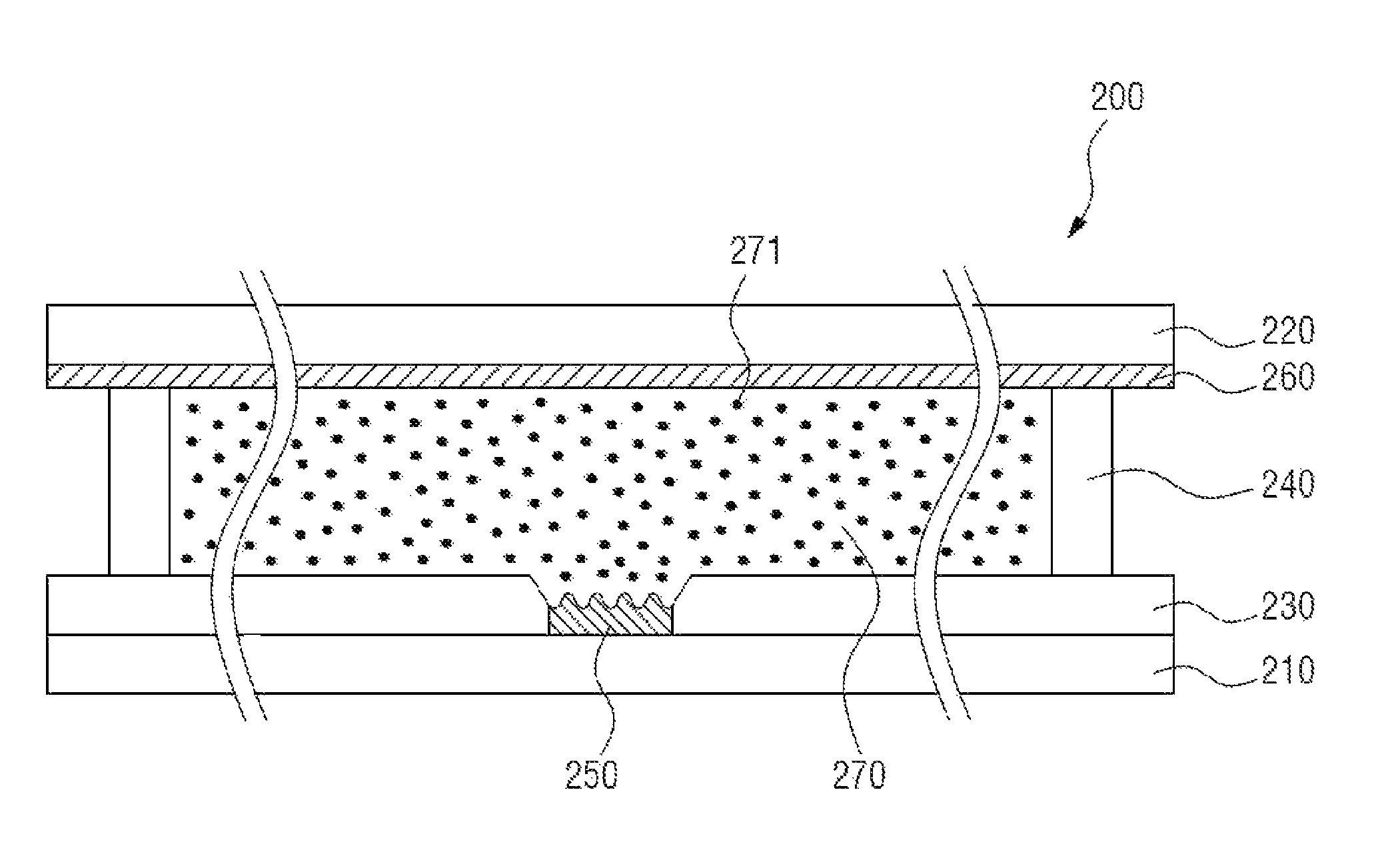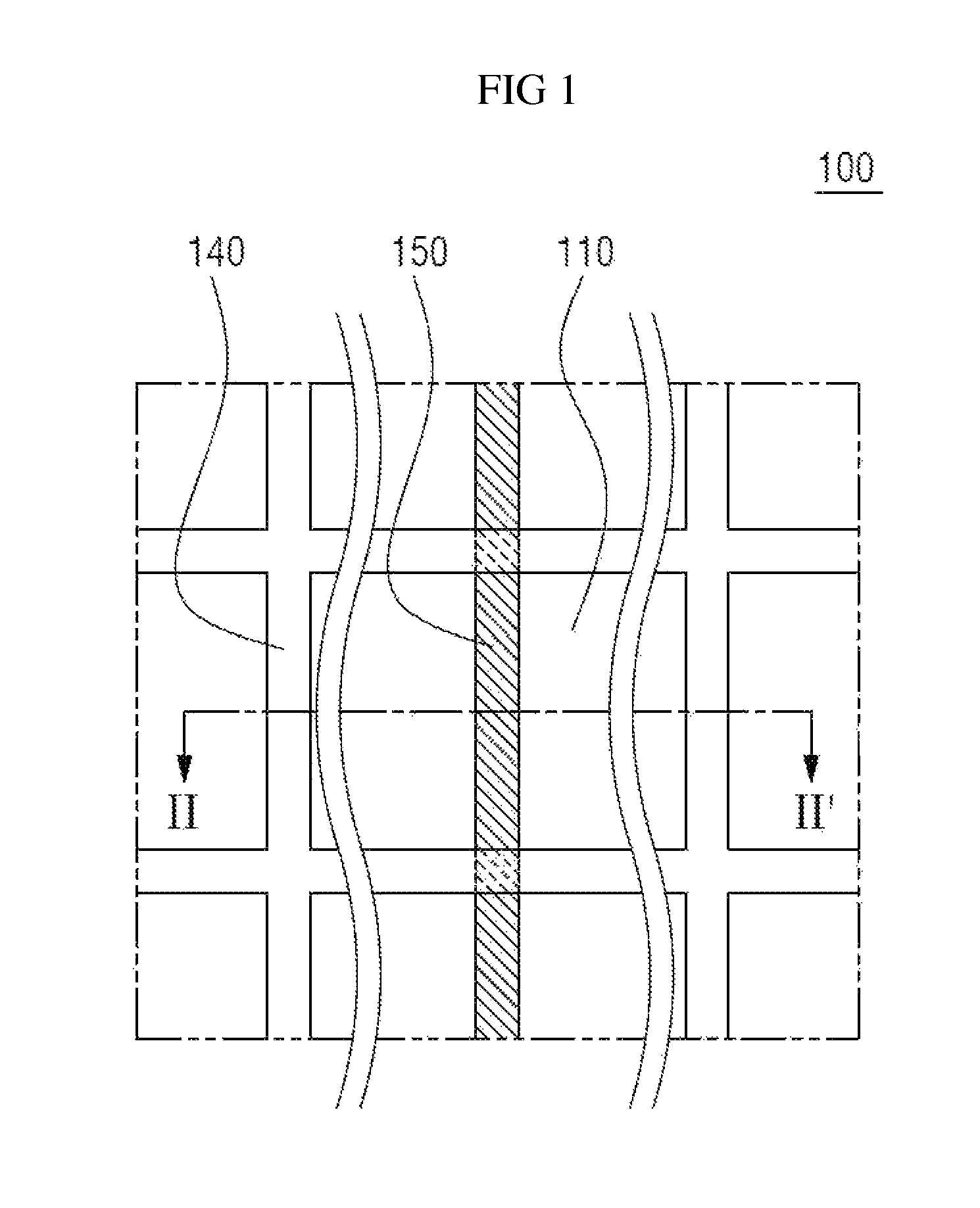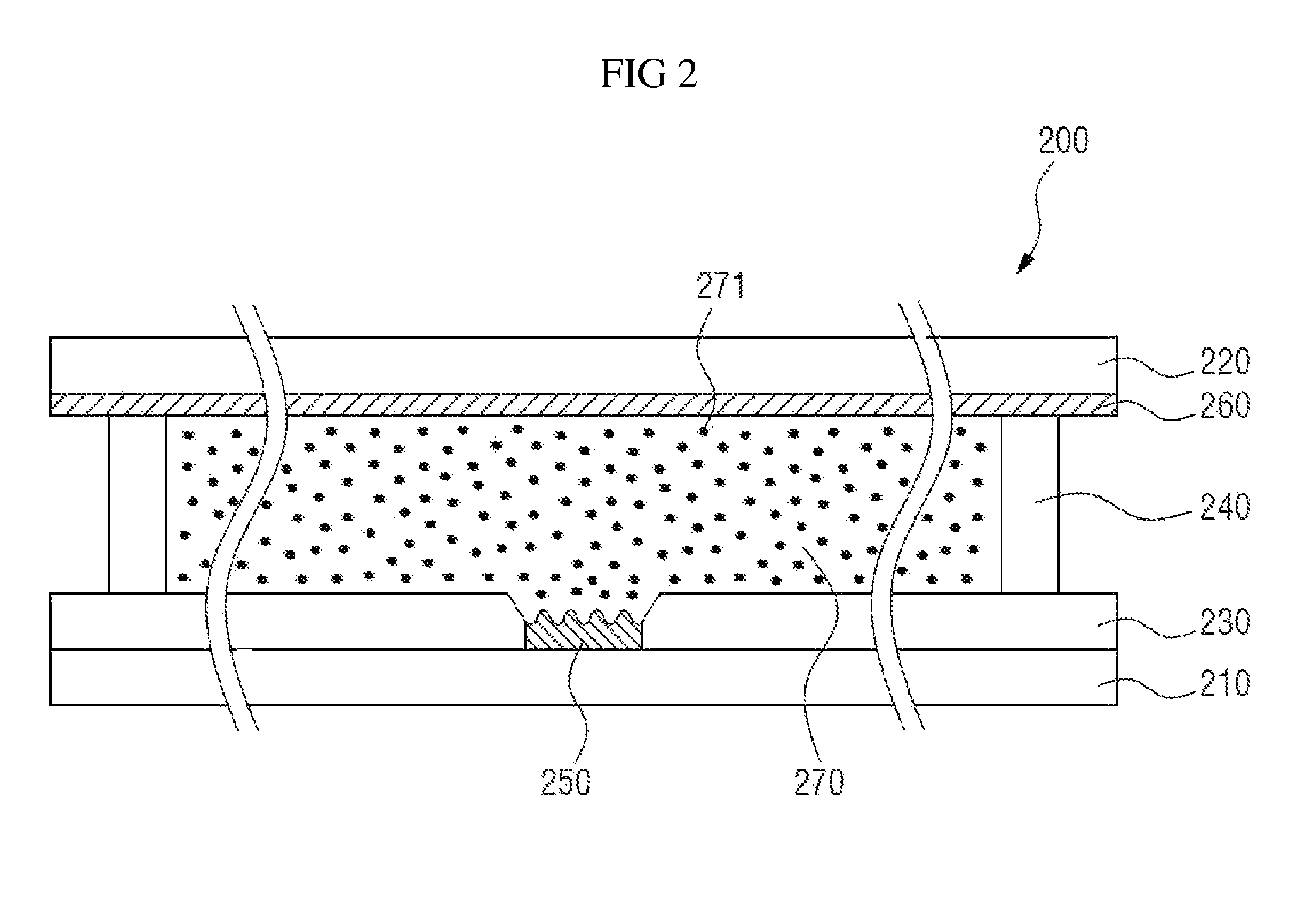Light-controlling device and method of manufacturing the same
a technology of light controlling device and light shielding mode, which is applied in the direction of optics, instruments, optical elements, etc., can solve the problems of reducing the effectiveness of the light controlling device during the light shielding mode, and achieve the effect of maximizing the light shielding property, negatively affecting the light transmittance of the device, and increasing the total surface area
- Summary
- Abstract
- Description
- Claims
- Application Information
AI Technical Summary
Benefits of technology
Problems solved by technology
Method used
Image
Examples
Embodiment Construction
[0029]Exemplary embodiments of the present invention will be described in detail below with reference to the accompanying drawings. While the present invention is shown and described in connection with exemplary embodiments thereof, it will be apparent to those skilled in the art that various modifications can be made without departing from the spirit and scope of the invention. It should be understood that the dimensions of the elements shown in the drawings may have been exaggerated for easier explanation of the embodiments and are not intended to limit the scope of the present invention.
[0030]An element or layer formed “on” another element or layer includes all a case in which an element is directly formed on another element, and a case in which an element is formed on another element with an additional element or layer formed therebetween. Although the terms first, second, etc. may be used to describe various elements, it should be understood that these elements are not limited ...
PUM
| Property | Measurement | Unit |
|---|---|---|
| thickness | aaaaa | aaaaa |
| thickness | aaaaa | aaaaa |
| angle | aaaaa | aaaaa |
Abstract
Description
Claims
Application Information
 Login to View More
Login to View More - R&D
- Intellectual Property
- Life Sciences
- Materials
- Tech Scout
- Unparalleled Data Quality
- Higher Quality Content
- 60% Fewer Hallucinations
Browse by: Latest US Patents, China's latest patents, Technical Efficacy Thesaurus, Application Domain, Technology Topic, Popular Technical Reports.
© 2025 PatSnap. All rights reserved.Legal|Privacy policy|Modern Slavery Act Transparency Statement|Sitemap|About US| Contact US: help@patsnap.com



